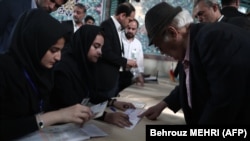Ten percent of Iran's population is elderly, with the Gilan province home to the country's oldest citizens, the head of Iran's Elderly Health Department of the Ministry of Health disclosed on Tuesday.
"Thirteen percent of the population in Gilan, bordering the Caspian Sea, north of Iran, is over sixty years old," Mohsen Shati told the state-run Iran Labor News Agency (ILNA).
In a specialized conference about "rehabilitation in old age," Shati said the province of Sistan and Baluchestan in southeast Iran has a population of "four to percent of the elderly," which shows that in "some provinces the process of aging a population" has already started.
Shati also said that the elderly population is moving towards a "female pattern," considering that almost everywhere in the world, women live longer than men. Some believe that the reason behind a longer life expectancy for women is that men often participate in more dangerous activities and tend to have more dangerous occupations, like serving in the armed forces.
Referring to the "occupancy rate of the elderly beds" in Iran, Shati stated, "Currently, about 40% and in some provinces up to 50% of the hospital beds is occupied by the elderly. This means that ten percent of the country's population (senior citizens) uses hospital beds and services four to five times more than their ratio."
Shati predicted that the number of Iran's elderly population would double in 2041, while in 1976, five percent of the country's population was elderly, and in the 2016 census, it reached about nine percent.
Therefore, Shati argued, since it took four decades for the country's elderly population to double, the next doubling of Iran's older citizens will not take more than 20 years.
According to the Borgen Project, a nonprofit organization that works towards ending poverty and hunger, "Aid for the elderly population in Iran is projected to become a large issue, as the country experienced a baby boom in the years of the Iraq-Iran war (1980 to 1988) which will lead to an increased elderly population in the future."
The rising rate of unemployment in Iran has made it difficult for the elderly to find and hold jobs, and most older adults are unable to provide for themselves in their old age.
One-third of the Iranian elderly population is not covered by any health insurance, and the Iranian government has diminished the elderly retirement pension — only one-third of the elderly population receives a pension — while 20 percent of families are economically dependent on senior householders.
The elderly demographic has a low socioeconomic status, and basic insurance policies fail to cover most elderly care costs. Without the money to afford the extra costs, older people often fail to receive the help they need.







